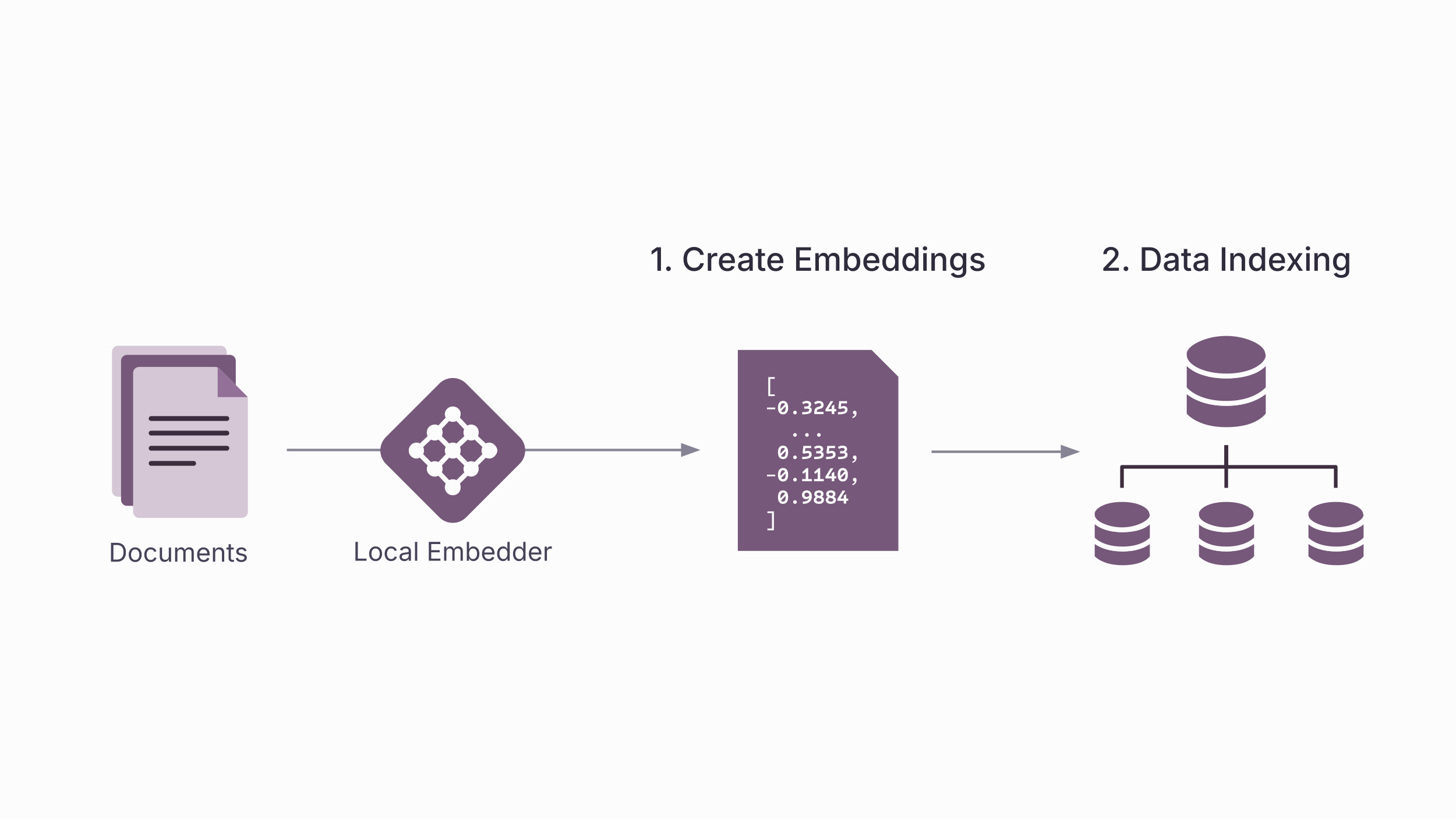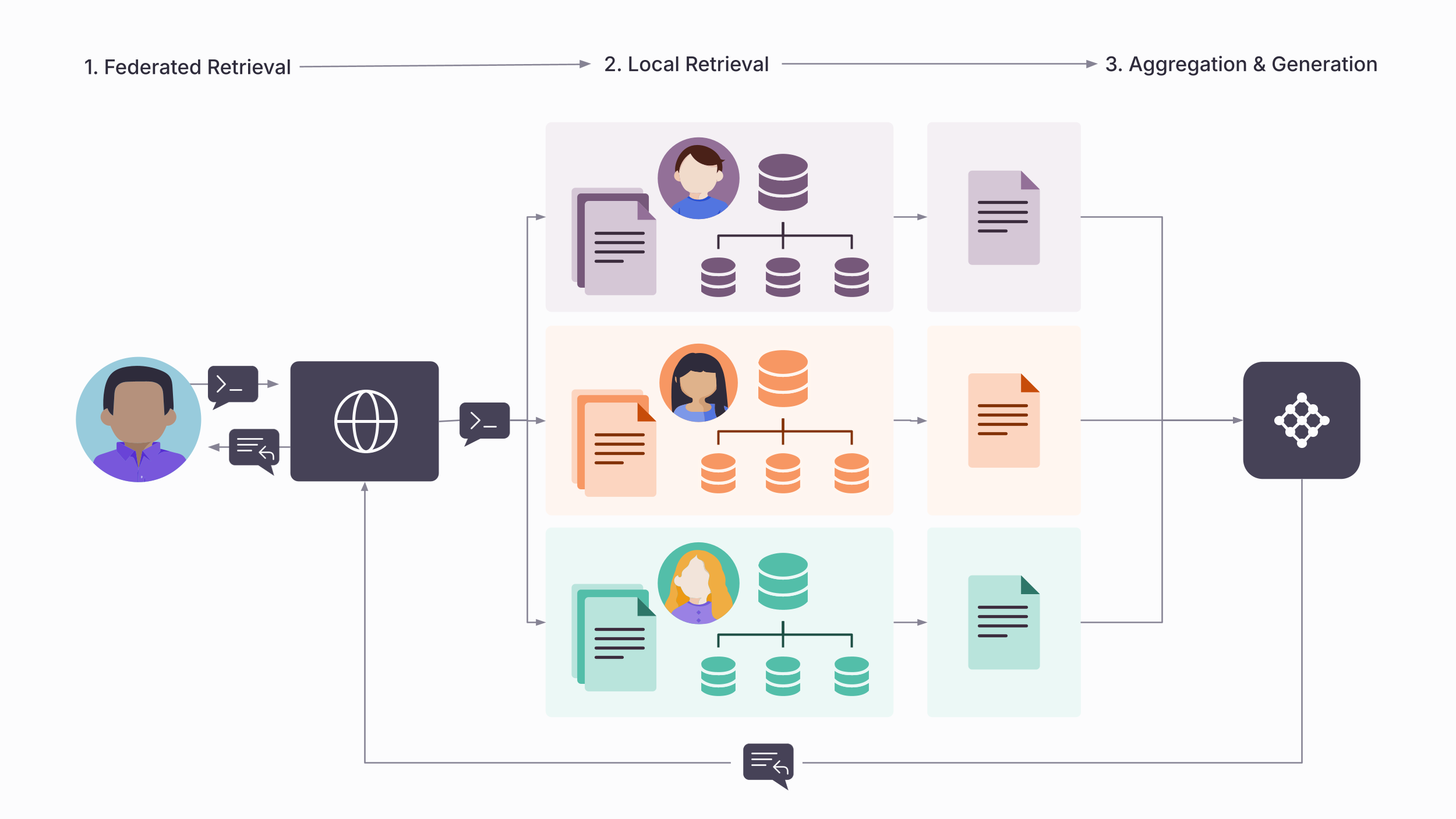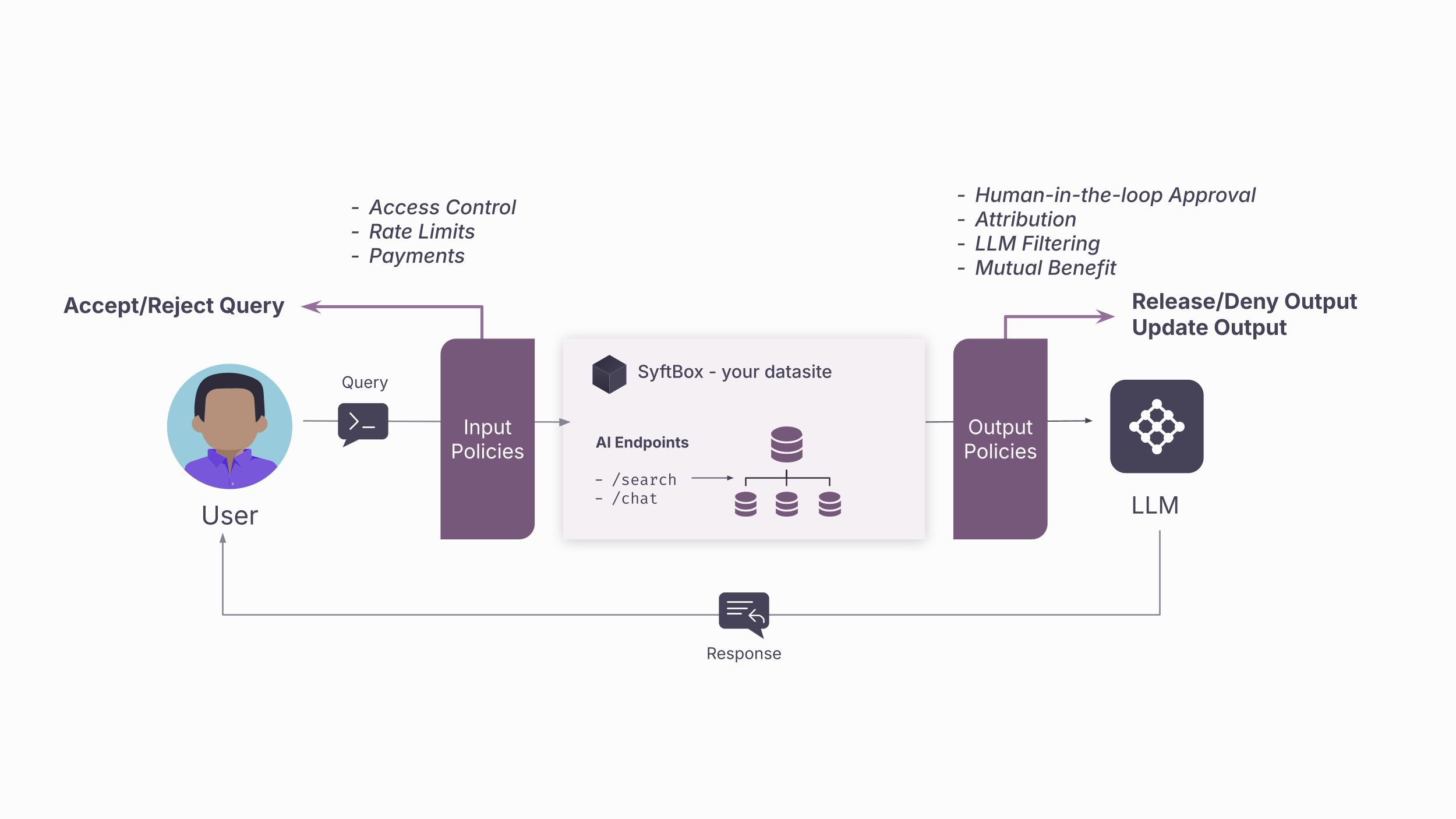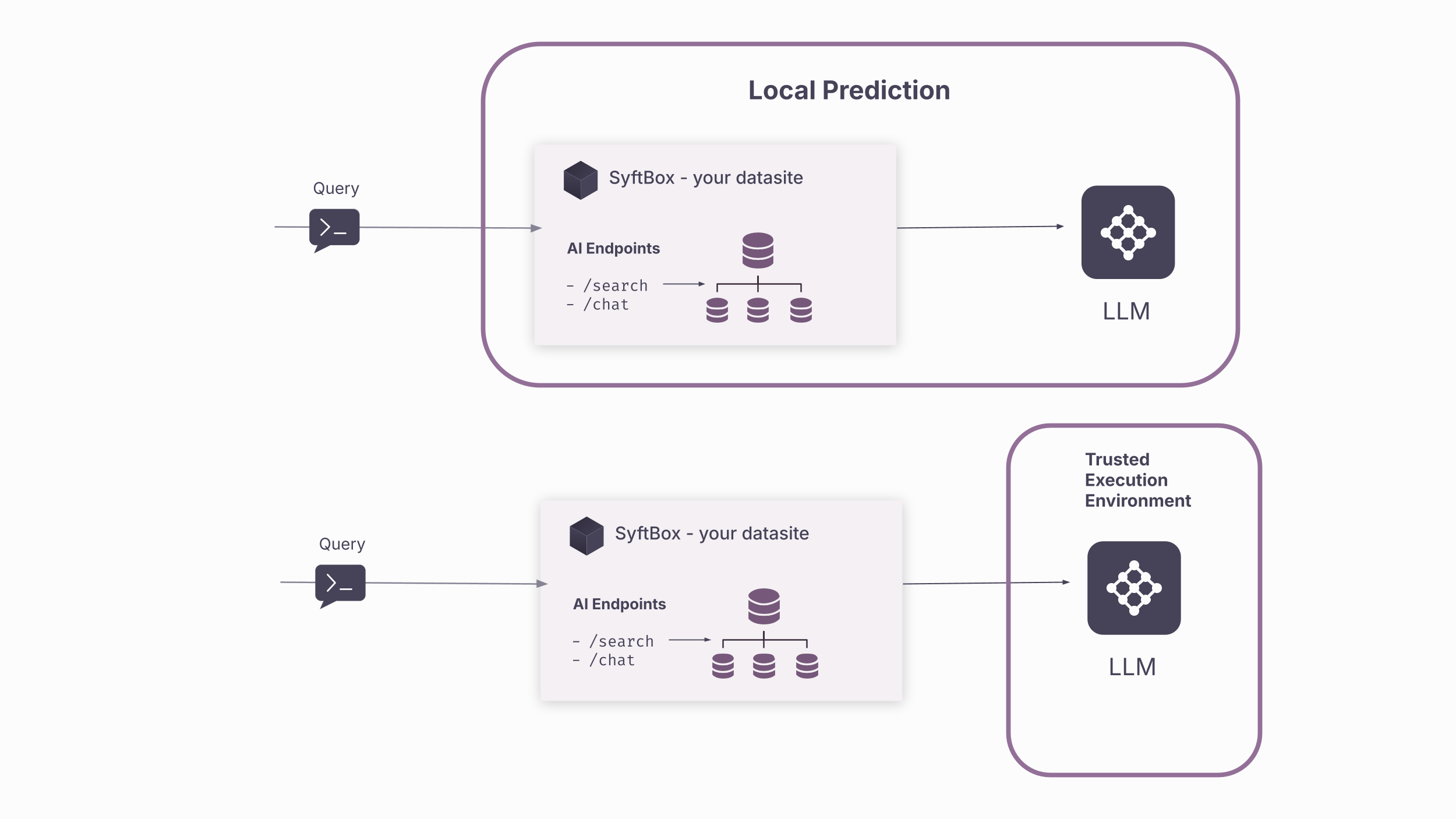Federating AI with
Attribution-Based Control
Learn how the Syft protocol and ecosystem can make AI both more powerful and more inclusive
The Structural Problem with AI
There's 3,000x more human-data generated each year than what LLMs use. Yet, most of it never makes it into AI and data owners are even opting out en masse. The issue: existing AI architectures structurally prevent meaningful incentive creation. Here's why:
Addition Problem
The Technical Problem
Deep learning is like a giant blender. Your content gets mathematically "mixed" with everything else during training steps, becoming impossible to separate.
You can't enforce rules because the AI can't tell which parts of its knowledge came from you.
Use Bundling
The Business Problem
You can't say "yes, use my stories to help students with creative writing, but no, don't use them to generate competing stories.".
Opting into AI is now all-or-nothing: you either support every possible AI prediction, or none at all.
Attribution-Based Control solves this by:
• Separable architecture: your data remains in your control, minimising memorisation during training (if any) and using it effectively at prediction time.
• Live querying where AI asks permission in real-time, letting you enforce preferences at use time.
.png)
How It Works
Different model architectures can enable Attribution-Based Control, keeping your knowledge separable and queryable at use time.
Federated
Retrieval-Augmented Generation
Uses external knowledge sources that are queried in real time and added to the model’s responses, while keeping full attribution to the original sources.
Federated
Mixture of Experts
Each participant keeps their own local model, which contributes predictions that are combined (like a voting system) to improve overall performance.
Hybrid Architectures
Federated systems that keep data partly separate while combining multiple compatible methods, such as privacy-preserving training (e.g., differential privacy) with FedRAG, FlexOlmo, and similar approaches.
Deep Dive: Federated RAG in Syft
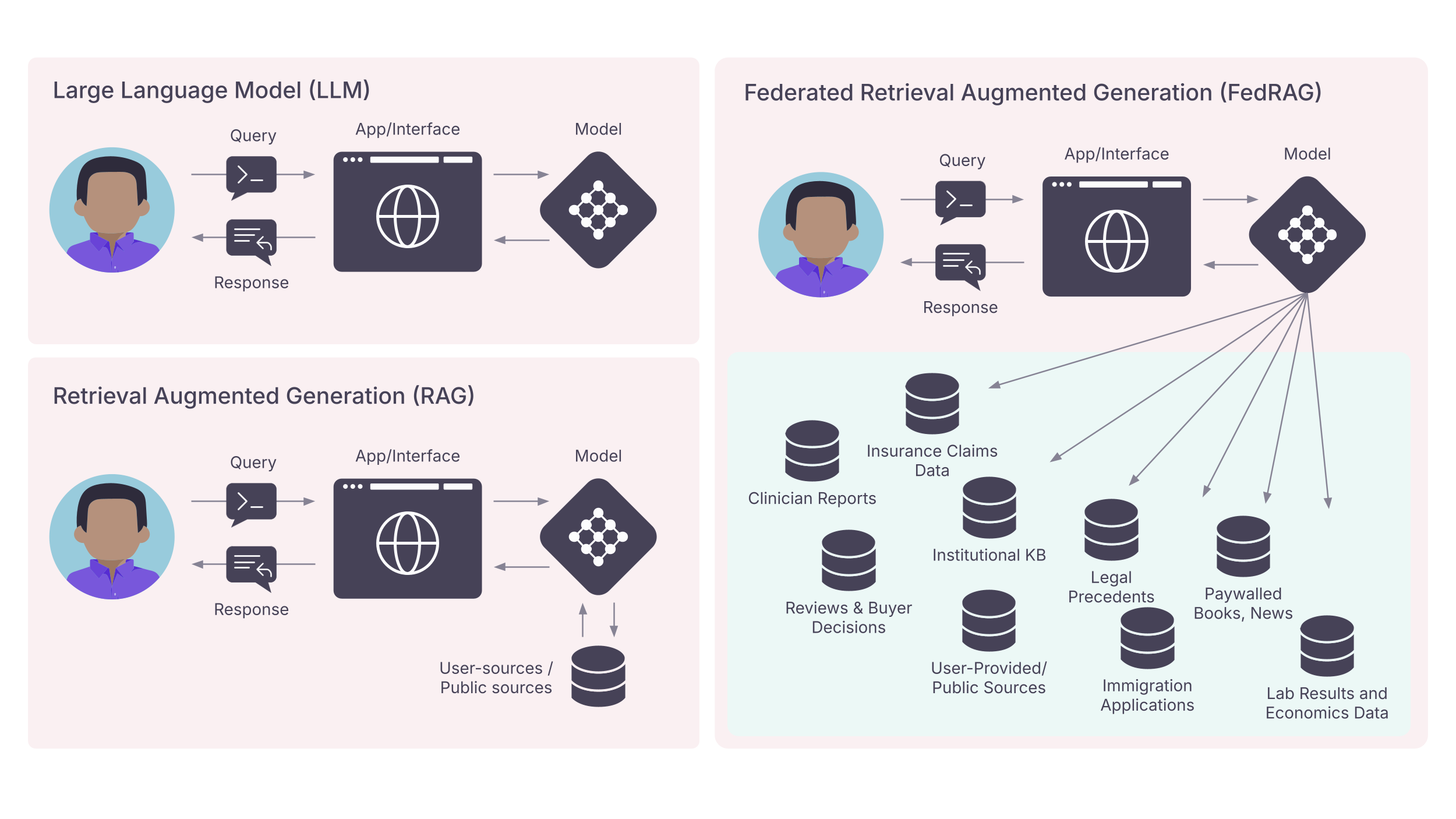
Explore the Syft Protocol & Tools
A complete toolkit for implementing Attribution-Based Control whenever your data is to used by AI.
Syft & SyftBox
Network Foundation
Live networked architecture, that enables secure communication, data sharing (like a massive shared DropBox with access permissions), and identity-based access.
Documentation Quick StartSyftRouter
Local AI Service & Policy Enforcement
Local runtime for creating and managing endpoints, with many off-the-shelf pre-packaged integrations. This is also where policies can be defined or used.
Documentation GithubPython SDK
Dev Tools
Using a highly convenient Python SDK, you can explore the Federated AI Network, query any data source and get with ease state-of-the-art results.
Documentation GithubSyftMCP
Agentic Tools
Coming SoonUse SyftMCP to get insights from this network with ease.
Coming Soon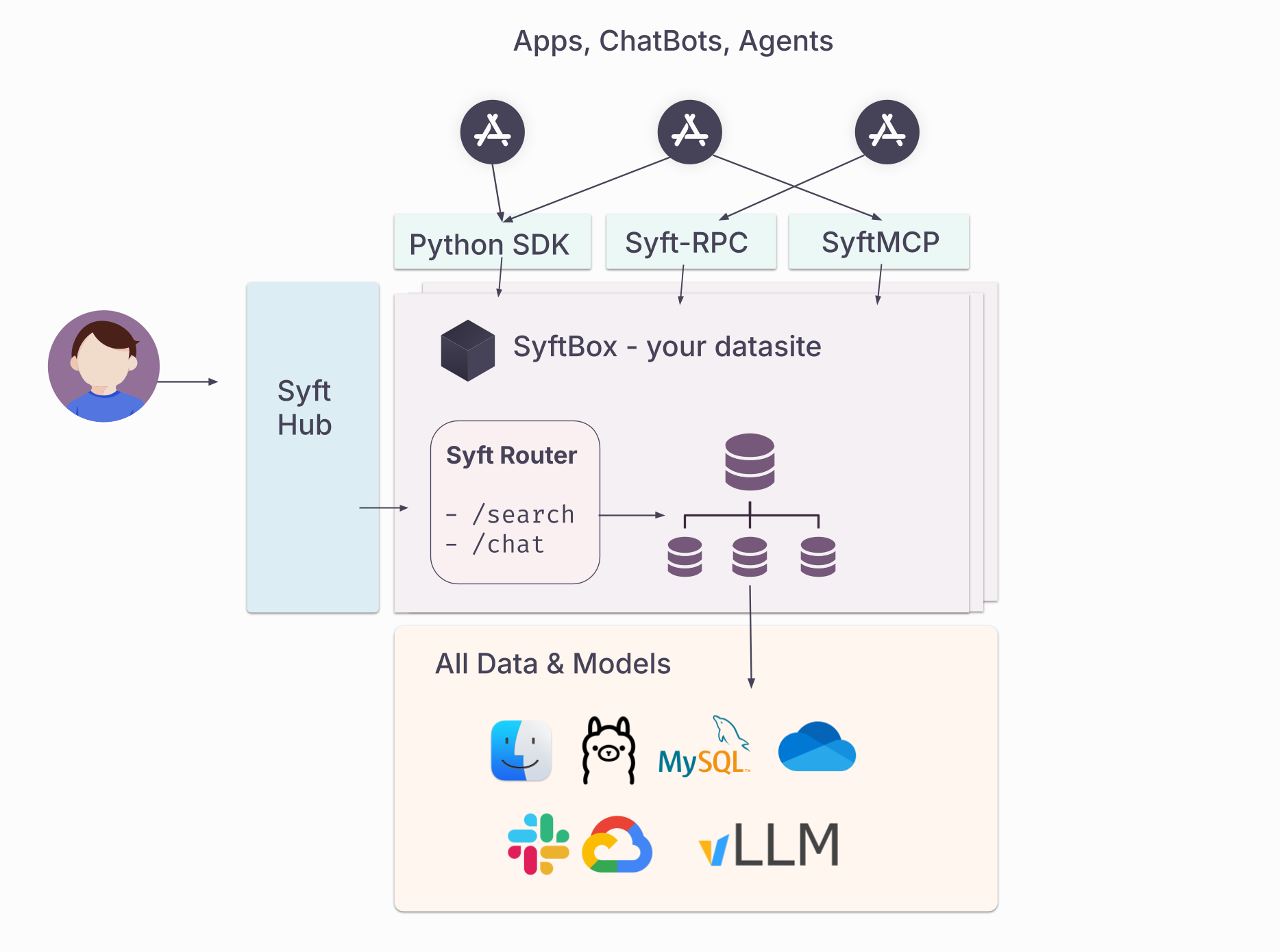
The Syft Protocol and its tools illustrations.
Join the conversation
The future of AI depends on collaboration among those who share a common mission.
Join the conversation and help shape what comes next.
